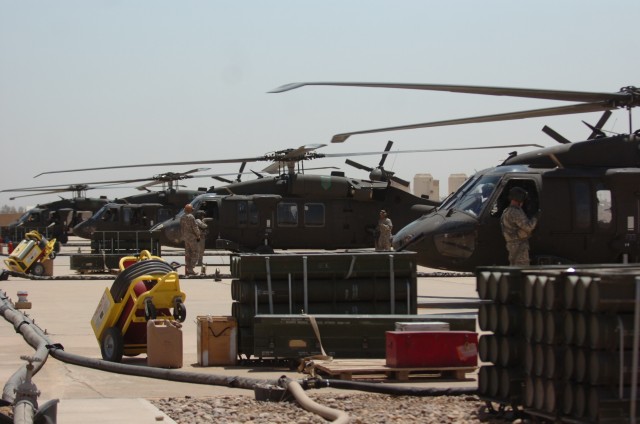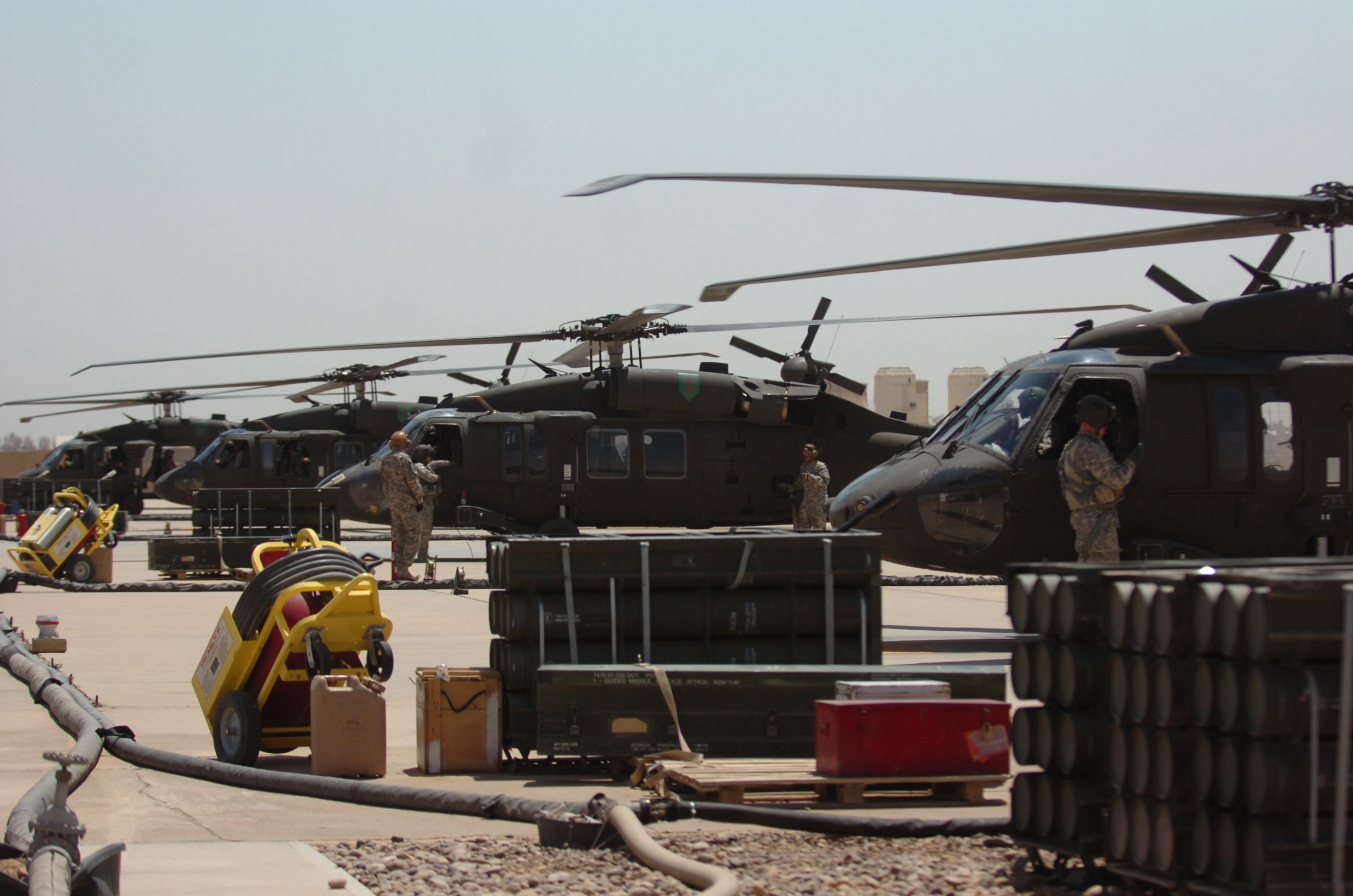CAMP TAJI, Iraq, Feb. 24, 2011 -- With their office next to 60,000 gallons of fuel, Soldiers at the Taji Forward Arming and Refueling Point heard the alarm "FIRE ON THE FARP" ring out Feb. 4.
Spc. Derrick Rasmussen had just come on shift at the Forward Arming and Refueling Point, or FARP, which is operated by Company A, 601st Aviation Support Battalion, when he heard helicopters landing to refuel. He started heading to the refueling point, as he had done every day of his year-long deployment to Iraq. But this time something besides the landing Black Hawks caught his eye.
"I spotted smoke that was blowing across the FARP," Rasmussen said. "At first I thought it was just a burn pit, but after taking a closer look I realized that we had a fire on the FARP."
He ran to the radio room so they could notify the fire department, then Rasmussen headed to the break room where he knew the rest of those on shift would be and hollered "FIRE ON THE FARP!"
"The next thing I know, about a dozen guys all kicked into action," said Rasmussen. "Some headed toward the fire. Myself and some others headed to the pad to let the (helicopter) crew chiefs know there was a fire."
As a normal safety precaution at the FARP, all passengers must disembark the helicopter as it refuels. But this would not be a normal refueling.
"I went to the birds to get them off the FARP because it is a safety hazard having them and their passengers on the ground when there is a fire," said Sgt. Jeremiah Pringle, a native of Columbia, S.C. "We got the birds off the pads and then we started unhooking the hoses so the fire wouldn't spread."
Sgt. Roger Jaramillo, the FARP's fire marshal, went straight to the fire, which was between two concrete walls; with a straight shot to a fuel pump about 15 to 20 feet away. On the other side of one of those concrete walls was a fuel bladder holding thousands of gallons of fuel.
Positioned along the center of the FARP are several compressed air foam fire suppression systems, called Tri-Maxs. Jaramillo went to one and headed to one side of the concrete wall.
"Specialist (Salvador) Cruz was on the other side of the fire with a fire extinguisher trying to extinguish it, while I sprayed into the fire with the Tri-Max from the other side," said Jaramillo.
The two worked together and quickly extinguished the fire.
The Soldiers agreed that although it seemed like it took awhile to put the fire out, only a couple of minutes had passed between the alarm being sounded and the fire being extinguished. The Taji Fire Department showed up right after they had put it out, and all that remained were a few embers.
"Everybody took the initiative in separate areas," said Jaramillo. "We didn't have a clutter of people in one area and no one in another."
Pringle said fuelers learn early in their training what to do if a fire breaks out, and the most important thing is to get passengers and helicopters away from the FARP. Here in Iraq, they have practiced what they should do in case of fire.
The FARP personnel are part of the Enhanced Combat Aviation Brigade, 1st Infantry Division, from Fort Riley, Kan. The brigade is the U.S. Army's sole aviation brigade in Iraq and is scheduled to redeploy to the states this spring.
"The most exciting part of the day was seeing our team coming together and attacking the problem as one unit," said Rasmussen.
Related Links:
U.S. Army Petroleum Supply Specialist (92F) Career Opportunities


Social Sharing